Penguins of the World
Who do not like these cute little chaps in their tuxedos?
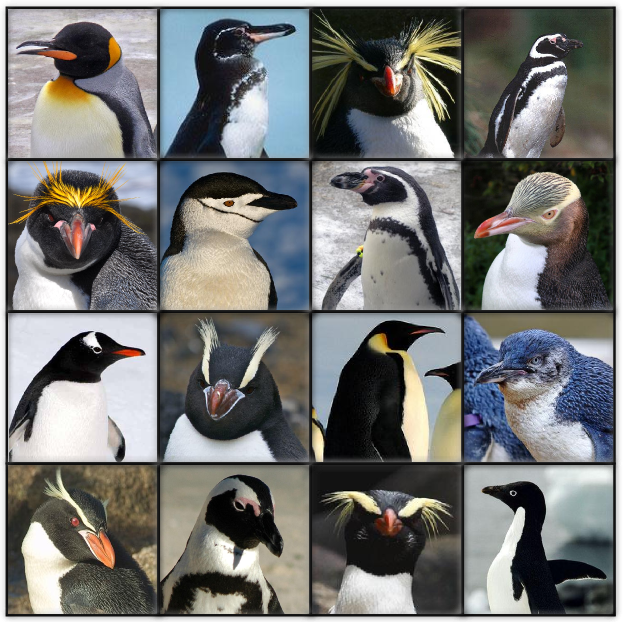
There are 17 species and they all live in the Southern hemisphere. You can find them at the coasts of Africa, Australian, Galapagos Islands, New Zealand and South America.
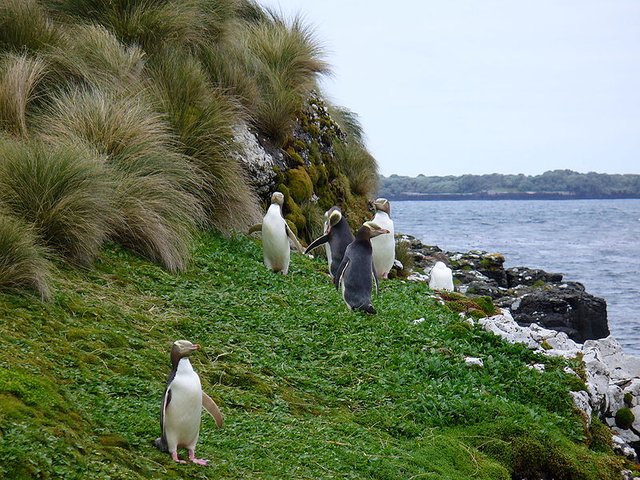
They are aquatic, flightless birds. Their tuxedos are like camouflage in the water to keep them safe. Penguins spend 75% of their life in water, hunting for food. Their diet manly consists of fish, krill and squid.
They mate between spring and summer. The eggs incubate between a month and 66 days all depending on the species. The king and emperor are the only penguins which lay only one egg as the rest lays two. The male and female takes turns to warm the eggs but for the Emperor penguin it is the male that stands for up to 9 weeks with the egg on his feet going without food for this entire period.
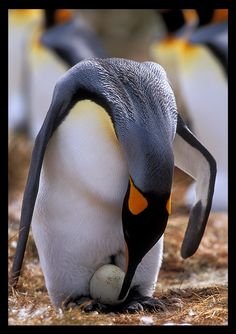
Penguins can live up to 27 years in the wild and 30 years in captivity.
My fascination with penguins started as a little girl. At 21 I had the privilege to actually work with the African penguin, helping with their rehabilitation after a huge oil spill from the MV Apollo Sea sank near Cape Town in June 1994 which affected thousands of our birds on Robben and Dassen Island. The ship had 1,300 tons of fuel oil of which spilled into the ocean. Over 20 000 birds were oiled and only about 2 thousand died after being taken in by SANCCOB and rehabilitated.
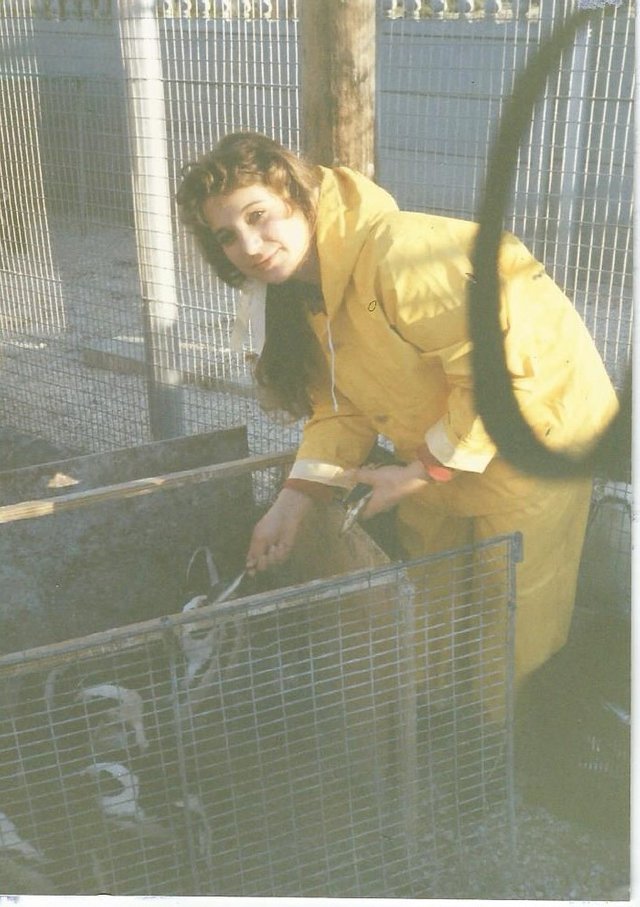
Photo taken in 1994
We went in every morning at 7am, washing the birds, scrubbing the oil off their feathers with a toothbrush. After they were washed we had to give them pectrolytes via a tube we had to force down their throats which were followed by a fish or two. We had to wear thick rubber gloves as these little cuties have very sharp and will bite anything in sight. I still have a few scars on my hands and upper leg as evidence to tell the story.
Sadly, to say many did not make it but on a positive note it was a wonderful experience to witness their release after the rehabilitation process that took three months. We were part of a volunteer group of about 45 000 people, feeding 400 tons of fish to these penguins. They used 7 000 tons of beach sand in the pens and 302 litres of detergent to wash the oil off the penguin’s feathers.
At SANCCOB people can volunteer helping rehabilitate oceanic birds. They also rear nearly 2500 abandoned chicks a year. You can support them by adopt a penguin.
https://sanccob.co.za
African: Also known as the jackass penguin. These penguins you can find in the Southern African waters, on 24 Islands stretching between Namibia and Algoa Bay. An Adult can weigh between 5-8 pounds and are 24-28 inches tall. They have pink patches of skin above their eyes and their chests are marked with a black band and spots. We have about 55 000 birds left and they are now part of our endangered species.
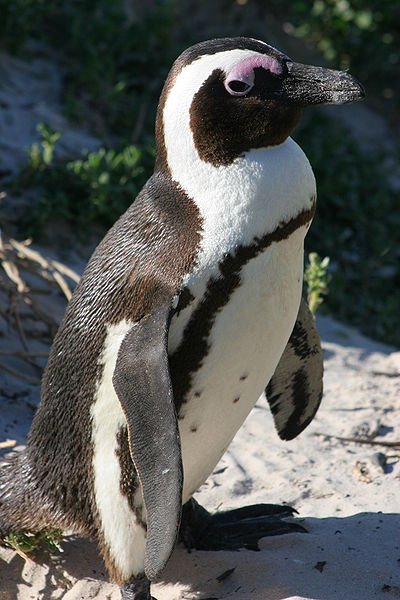
Adelie: Their entire heads are black and they have a white ring around their eyes. They are the smallest penguins living in the Antarctic, weighing 8/9 pounds and stands about two feet tall. These penguins are named after the wife of a French explorer.
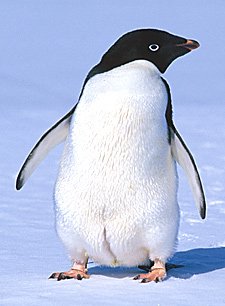
Chinstrap: They have a black band running under their chins, weigh about 10 ponds and can reach a height of two feet. These penguins diet consists of krill and fish and they live on the open oceans of the Antarctic on Icebergs.
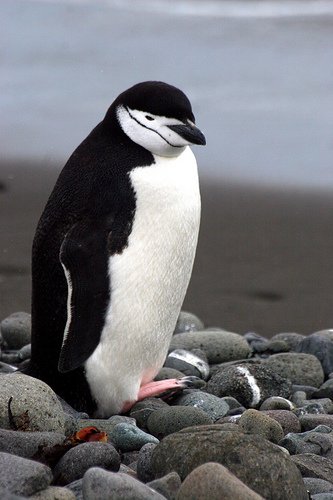
Emperor: This penguin has some orange on his cheeks and is the largest in the world, standing 4 feet tall and can weigh up to as much as 90 pounds. They live in the Antarctic all year round and due to the harsh conditions only lay one egg and not two like all the other species.
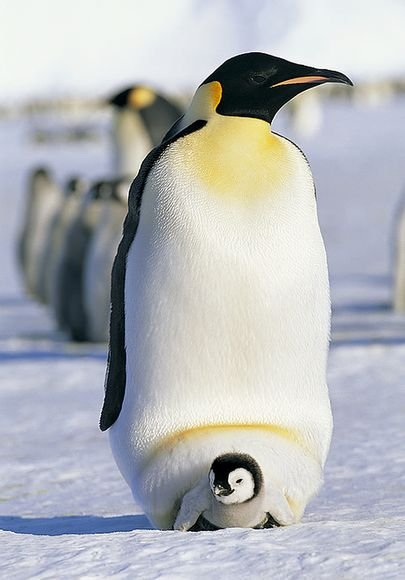
Erect-Crested: They have very distinctive yellow feathers above their eyes and is the largest of the crested penguins. They are very sociable and live in large colonies of a few thousand and breeds mostly in the Bounty and Antipode Islands, you can also find them on the Auckland and Campbell Islands. The sometimes add fish to the diet which mainly consist of krill and squid.
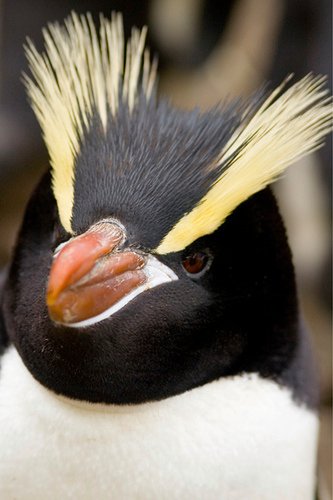
Fiordland crescent: Also have the yellow feathery crest but theirs do not move up and down like the Erect-Crested. They weigh about 8 pounds and are medium sized. The Fiordland penguins are endangered due to their small population of about 2500-3000 breeding pairs.
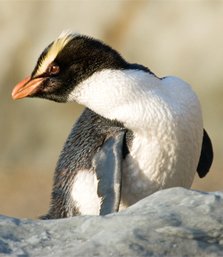
Galapagos: This penguin lives north of the equator in the archipelago of the Galapagos Islands. They can weigh up to 5.5 pounds and are 19 inches long and is the second smallest penguin species. There is a white border running from behind the eye to the throat.
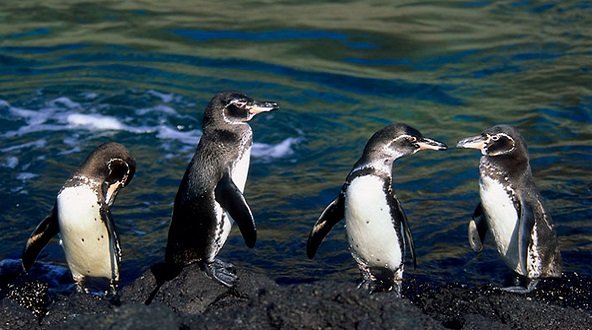
Gentoo: It has a white bonnet across its head, an orange-red bill and a longest tail of all penguins. The Gentoo is the 3rd largest species of penguin weighing 19 pounds and reaches a length between 20-35 inches. They like to nest between grass and use a pile of stones on shallow coastal areas of the sub Antarctic Islands.
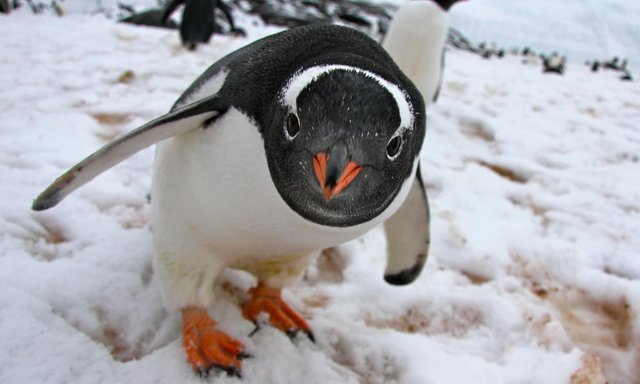
Humboldt: This penguin breeds on the costs of Chilli and Peru in South America. Their name stems from the cold water current they swim in. They can reach between 22-28 inches and weighs between 8-13 pounds. The black breast band extends to the thigh.
King: Second largest penguin reaching a height of 28-39 inches and weighs between 24-27 pounds. The King penguins largest breeding populations are on the Crozet Islands, Prince Edward Islands and South Georgia archipelago. They have a dark orange cheek patch and an orange collar at the top of their chests.

Little blue: Also known as the fairy penguin and the smallest in the world weighing up to 3 pound and grows about 13 inches tall. They are blue from the top of their heads down their backsides. This little penguin is mostly found in Australia but there are also some in New Zealand and Chile.
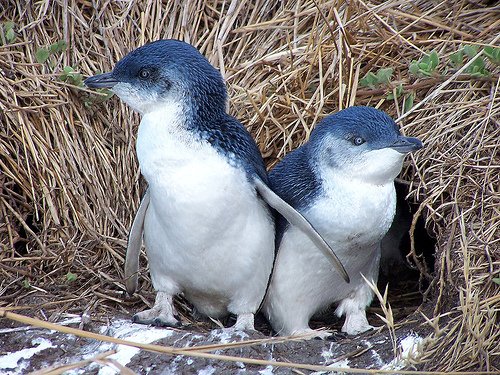
Macaroni: They have yellow and black feathers on their heads and a very large red beak. Macaroni penguins weigh about 12 pounds and are 28 inches tall. You can find them around the Antarctic Peninsula, Sub Antarctic regions and the Islands of South America. They migrate annually.
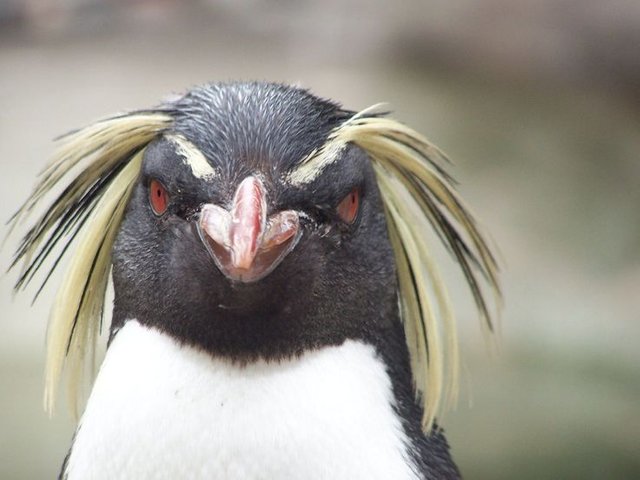
Magellanic: South American penguin breeding on the coasts of Argentina, Chile, Falkland and some migrating to Brazil. They were spotted in 1520 by the Portuguese explorer Ferdinand Magellan and was named after him. The Magellanic get about 30 inches tall and weighs between 6-14 pounds. They have two black bands between the head and the breast, the head is black with a white border.
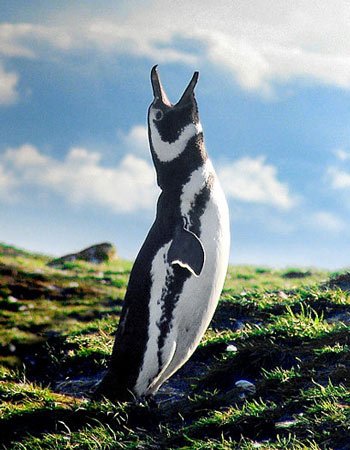
Rockhopper: They are the smallest penguin species in the world. They weigh 5 pounds and 20 inches in height as full grown adults. You can distinguish them by their red eyes, orange beak and pink webbed feet. They also have yellow and black feathers on their head. The Rockhoppers can be broken into three subspecies: Eastern, Northern and Southern, this is due to their location and behaviours.
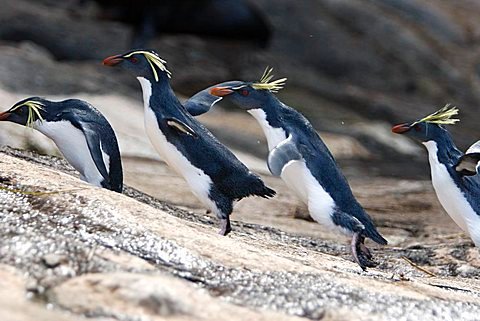
Royal: You can find them in the freezing waters and area of the Antarctic. He has yellow feathers growing from the front to the back of his head, they have white chins and faces. They often get confused with the Macaroni penguin. This penguin weighs between 6-13 pounds and reaches a height of 24-27 inches. They only breed in the Macquarie Islands where you will find no other penguin species.
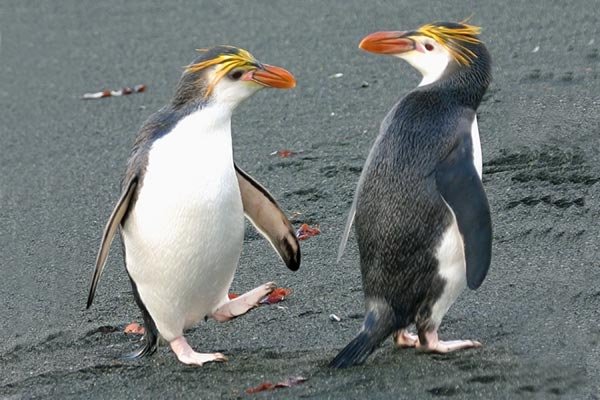
Snares: This penguin lives in the sub-Antarctic Snares Islands. The yellow crest starts at the base of the bill, runs over the eyes to the back of the head. They weigh about 6,5 pounds and reach a height of 1.3 feet. What differentiated them from the Fiordland penguin is the bare skin under the bill. They like to roost on branches. The Snare Island is part of New Zealand’s sub-Antarctic World Heritage.
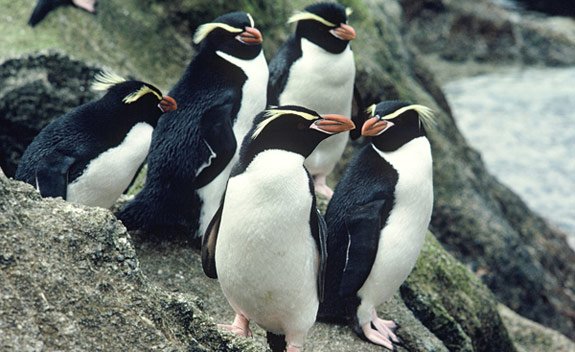
Yellow-eyed: Is native to New Zealand and also called Hoiho. They have a pale yellow uncrested band running over the head between the two yellow eyes, their fore crown is black and yellow. You can find them on coastal hardwood forests. They reach a height of 24-31 inches and weighs between 12-18 pounds.
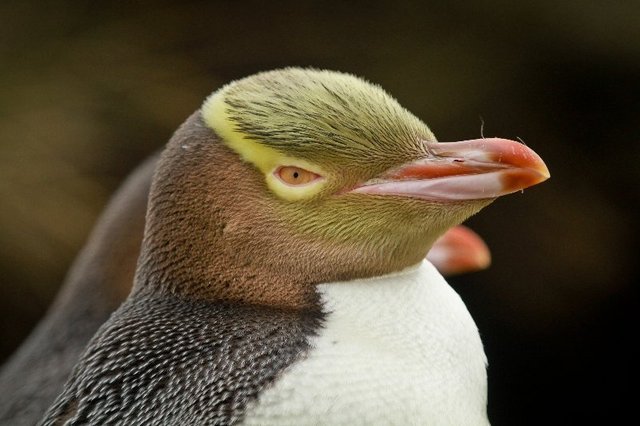
I was really surprised that there are so many different looks.
upvoted and resteemed.
Thank you freiheit50. I knew there were a few different species but not this many as I discovered during my research for this article. You can easily mistaken them if you do not look carefully to notice the differences between some of them.
Bravo! excellent post, beautiful photographs, today I learned a lot from you @crazymumzysa of life of these beautiful animals congratulations thank you very much
Thank you jlufer. Sometimes you experience things and only learn the basics but being inquisitive can teach you so much more.
Very cool post
We see the odd penguin in Wellington NZ - here is a road sign